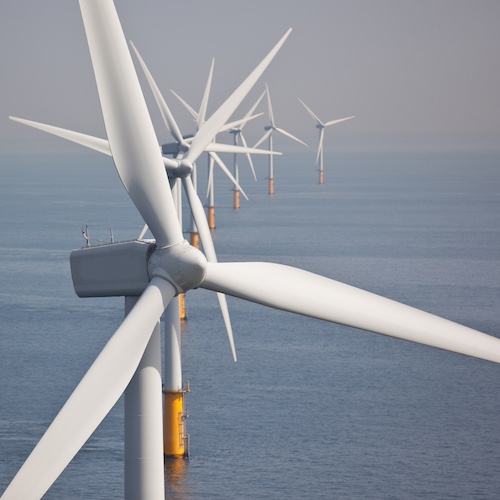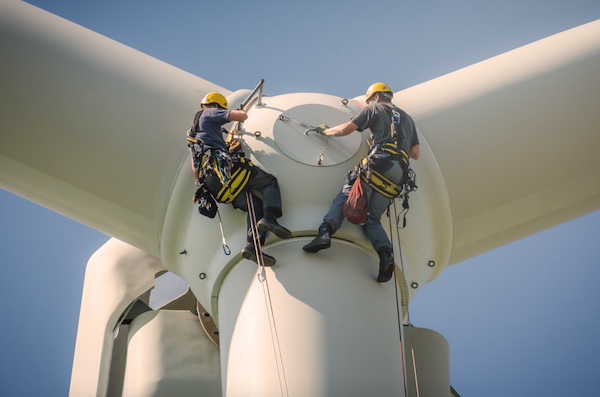Wind Systems, Alarm Data & Actionable Insights
Wind energy remains the leading non-hydro renewable technology, and one of the fastest-growing of all power generation technologies. The key to making wind even more competitive is maximizing energy production and efficiently maintaining the assets. This requires collaboration between site technicians, performance engineering, and reliability engineering. The key component of ensuring maximum productivity is leveraging the immense amount of structured and unstructured data generated by the power plants.
Enabled by artificial intelligence (AI), a renewables-specific platform with a strong data foundation can process and analyze vast amounts of turbine data in real time for maintenance optimization, turbine monitoring and inspection, production optimization, power forecasting and scheduling, and more.
The Challenges
Most owners and operators engage with multiple original equipment manufacturers (OEMs), all of which have disparate plant control systems. They must deal with an incredible amount of asset operational data; so much data that it’s tough to encapsulate it for any of the hundreds of individuals that need access such as site technicians, site managers, engineering analysts, asset managers, executives, and others. Wind companies also face increasing obligations while handling the challenges involved with managing fleets and associated data, all of which have disparate and manual workflows and systems. It creates a challenge for scaling operations. Companies seek to reduce costs proactively while increasing revenue, without canceling each other out.
The Solution
To solve these challenges and extract the maximum value from wind projects at the lowest cost, wind farm owners and operators need a full-spectrum performance management (APM) platform with a strong data foundation, advanced AI for actionable insights, and flexibility to extend to other areas such as solar and battery storage.
The issue with the generic data platforms is that it leaves a lot to the customer to set up the data and analytics while requiring an immense amount of effort. A renewables-specific, modular platform is required to overcome these challenges efficiently. The platform should be able to establish a robust and extendible data layer with the ability to handle data ingestion from various sources such as OPC, ODBC, DNP3, MQTT, etc. It needs to provide domain-conscious automated data backfill, filtering, and augmentation, and it should be a central platform for structured and unstructured data from an asset or third-party sources.
 The modular, renewable AI platform integrates seamlessly with customizable dashboards for monitoring fleet, asset, and device levels and domain-specific visualization tools. It has templatized visualization and reports that enable efficient repeatability, with raw, aggregated, and calculated data available through APIs and the user interface (UI)
The modular, renewable AI platform integrates seamlessly with customizable dashboards for monitoring fleet, asset, and device levels and domain-specific visualization tools. It has templatized visualization and reports that enable efficient repeatability, with raw, aggregated, and calculated data available through APIs and the user interface (UI)
Once a strong data foundation has been laid, the APM platform can automate industry-standard KPIs such as contractual availability by automating the quantification of downtime and energy loss for all types of events. The ability to process raw events and logs into processed alarms with categorization (such as availability allocation, GADS, and IEC classifications) right out of the box saves customers deployment time. If there are specific contractual requirements, this platform should be able to configure multiple availability algorithms using specific curtailment loss, expected energy, and energy loss calculations.
The APM platform automates workflows with scheduled standard and user-based PDF, Word, and Excel reports, including GADS reports. Site teams can use the interactive Plan of Day tool, which includes site conditions, asset status, and notes. This improves efficiency and collaboration.
The ability to detect issues ahead of time is key to reducing maintenance costs and preventing catastrophic issues. Of particular interest to wind maintenance providers, it monitors the power curve, the main bearing, generator winding, pitch system, and more. It also has interactive features that allow user sensitivity customization, validation, and model feedback. Maintenance personnel can make informed predictions with prescriptive actions tied to model alerts. The platform allows a no-code and/or bring-your-own code-based rules to provide self-serve capabilities to customers. The ability to have email and SMS notifications from the platform anytime issues are detected automates the workflow, and ensures nothing falls through the cracks.
The energy production forecast is critical as renewables become a bigger part of the energy mix. The platform has capabilities of AI-based wind forecasts or the ability to bring in third-party forecasts, and includes workflows for users to incorporate known downtimes and maintenance events. This improves planning and trading maintenance as well as forecasts energy loss for ongoing downtime, aiding prioritization efforts.
The AI/ML platform provides a link to knowledge in a central location with component inventory tracking, major component incident tracking tickets, and the ability to store documents and notes linked to system alarms, model alerts, and notifications. Furthermore, the Generative AI assistant unlocks unstructured data like maintenance data, user manuals, industry documentation, user notes, and other documentation.

The Results
Wind owners and operators that use AI can operate their assets more reliably and efficiently. Both service providers of operations and maintenance solutions to the renewable energy industry, and major electric energy companies are already using AI for their operations. The renewable AI tool contributes to the safety, affordability, and reliability of energy generation, delivery, and consumption. AI also contributes to increased revenue by catching underperformance or leading indicators of failures early, and implementing a fix sooner with prescriptive actions. As a result, renewable energy customers have increased annual energy production by up to five percent. Companies are also experiencing improved planning decisions with automatic quantification of energy and revenue loss, along with future production forecasts and efficient prioritization. This ensures resources are spent on the highest value add. They are also finding value in the ability to visualize future spare parts needs and advanced planning of crane callouts, helping with batch purchasing and grouped repair scheduling while avoiding unnecessary costs and improving ROI.
An AI-enabled APM platform with a strong data foundation and domain-centric data filtering and cleaning democratizes access to data for relevant stakeholders. The ability to detect issues, such as under-performance and anomalies, proactively ensures that assets are operating optimally, and is one of the keys to driving down the cost of renewable energy and ensuring the march toward green energy.
Sandeep Gupta is the VP, Technology & Strategy, Renewables at SparkCognition. He was Chief Executive Officer at Ensemble Energy from June 2017 to May 2021. Sandeep is a co-founder of the company and has led the development of the platform, strategy, and fundraising. From April 2013 to November 2017, he served as the President & CEO at Helios Engineering Inc. Sandeep received a Ph.D. in Aerospace Engineering from the University of Maryland, an M.S. in Aerospace Engineering from Rutgers University, and a B.Tech (Hons.) in Aerospace Engineering from the Indian Institute of Technology, Kharagpur.
SparkCognition | www.sparkcognition.com
Author: Dr. Sandeep Gupta
Volume: 2024 March/April








